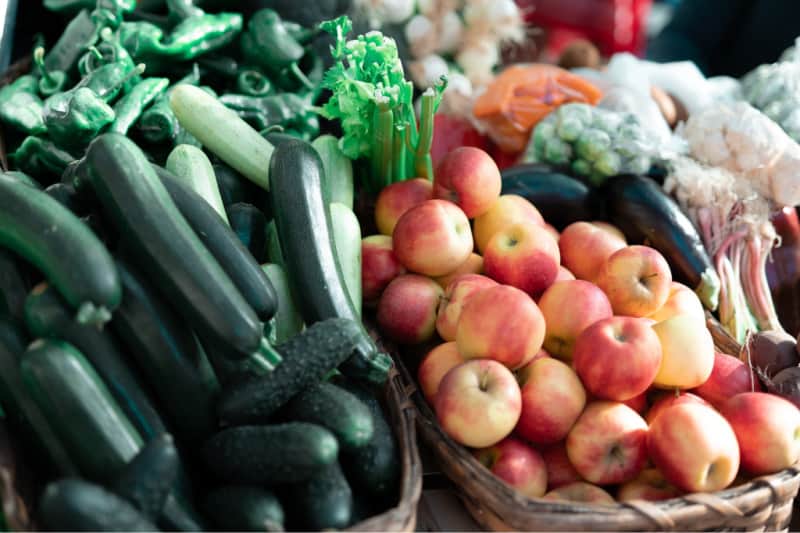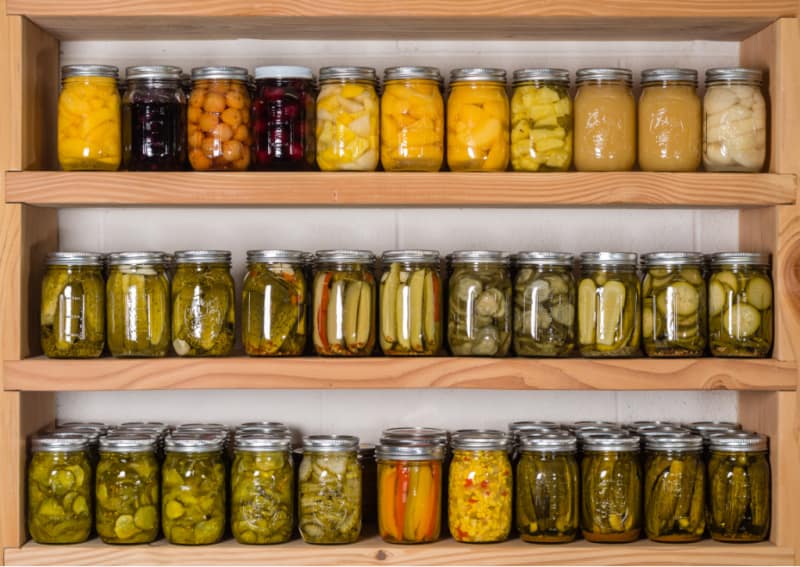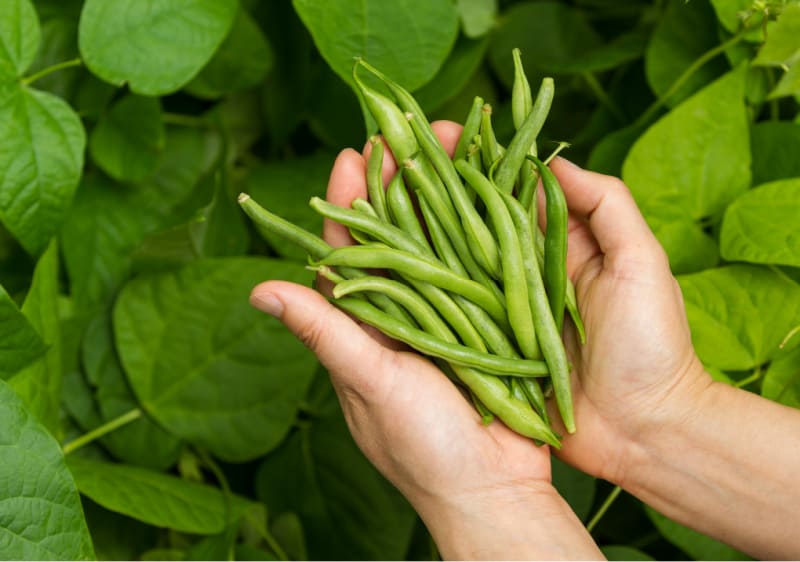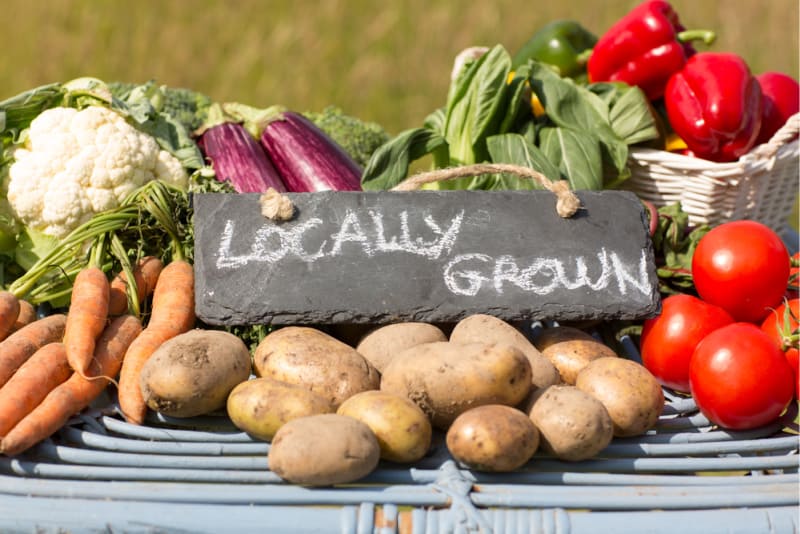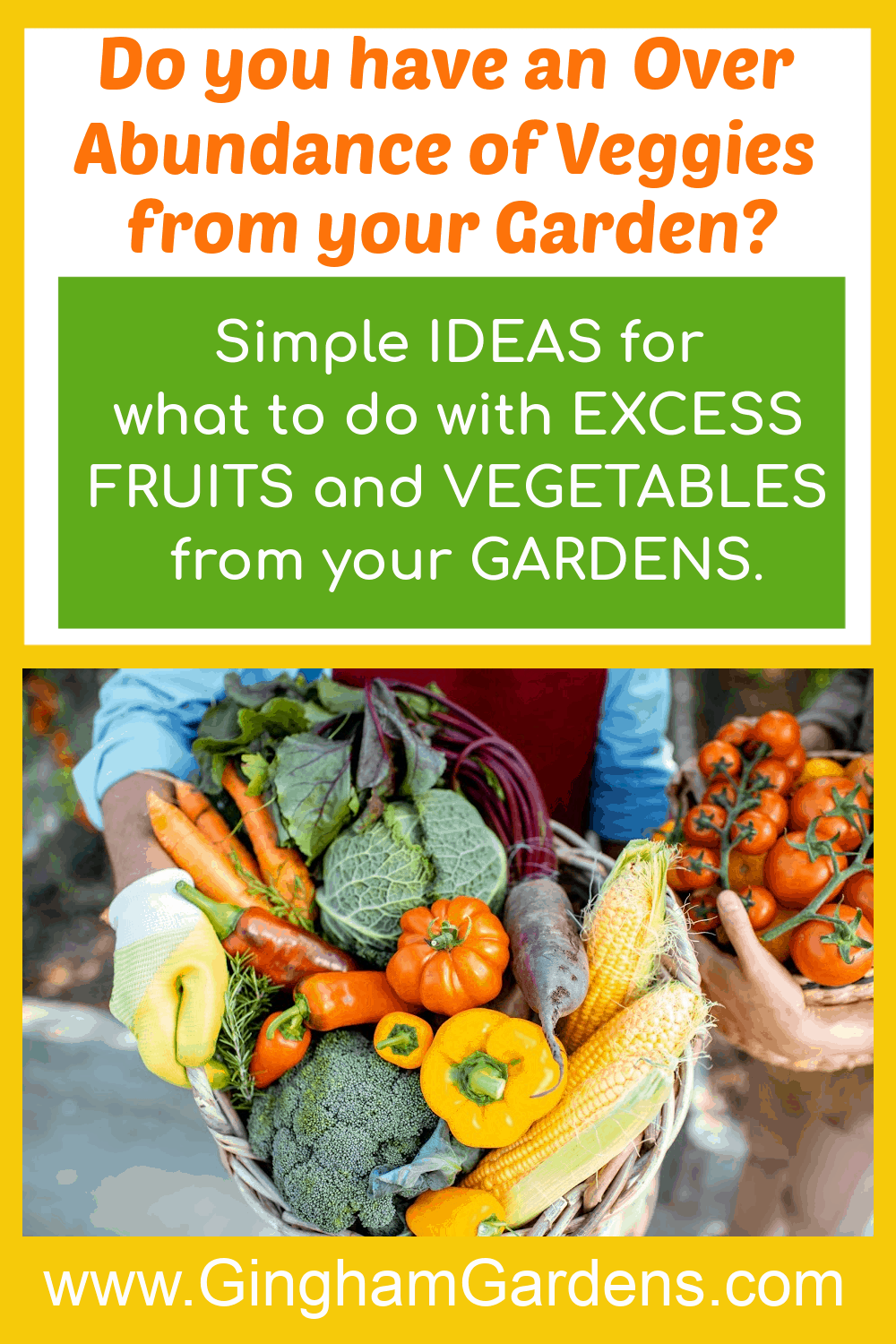What to Do With Excess Veggies from the Garden
Uh-Oh! Did you plant too much? Were you overzealous when you were planting your vegetable patch? Are you saying to yourself, ‘what am I going to do with all of this?’ It’s an amazing feeling to know you succeeded in growing your own food and even as long as I’ve been gardening, I never grow tired of that sense of accomplishment. I’m not going to lie though, trying to figure out what to do with all of the excess veggies from the garden can be a little overwhelming.
For me, it’s tomatoes. Every single year I plant way too many tomatoes! And, the crazy part is that we don’t eat them. Seriously, we don’t like tomatoes, but I still plant them anyway. What can I say, I just get a kick out of growing things. We just give them away and the recipients are always appreciative.
Every year, most gardeners, both new and seasoned alike, try to gauge and plant their vegetable garden according to the need they anticipate for themselves or their families. It’s not hard to get carried away in early spring (ask me how I know) when you’re planning which garden vegetables you will plant. But, with August comes the realization that you over-planted. Now, your crops are ready to harvest, sometimes all at once, and you can’t possibly use it all before it starts to go bad.
This post contains affiliate links. If you click on
one of the links and make a purchase,
I may receive a small commission at no additional cost to you.
See full disclosure here.
Don’t let your hard work and the value of your fruits and veggies go to waste. If you’ve been blessed with an overabundance of produce, here are some ideas you may or may not have thought of. First of all, there’s more than one way to preserve food from your garden and I would encourage you to try them all. Maybe just not all in the same year. Remember the gratification you felt when you harvested your garden produce, multiply that by ten and that’s how you’ll feel when you use your preserved produce to prepare meals later in the winter.
Canning the Excess Veggies From Your Garden
I’m definitely not a food blogger, but that’s okay because canning recipes are readily available. Before attempting one, be sure to read comments or reviews. Homemade jams or jellies, apple butter, salsa, pickles, relish, or anything your family loves make an awesome gift for Christmas. Canning is a lot of work, but you’ll be proud of your effort when you see those jars in the pantry.
Although there seems to be a shortage of canning lids from time to time, for the most part canning jars and supplies are available at big box stores and even some hardware and garden supply stores. Mason jars can often be found at yard sales, so keep an eye out throughout the summer. It’s also a good idea to use a water bath canner. If you plan on doing lots of canning and can afford it, go ahead and purchase one. You will likely use it for years and years to come. If you’re just not sure, ask around and see if you can find one to borrow.
If you’re new to this process of canning or need a refresher, look for courses in your local community education program. Or, our favorite education source, YouTube. Don’t be shy about asking for help, either. Someone from work, your church, or a family member may be a whiz when it comes to canning food and will be happy to give you some pointers. Maybe they’ll even come over to help.
Freezing Vegetables and Fruits
Freezing is the easier method for preserving your fresh vegetables and fruits. It’s wonderful to have frozen strawberries, raspberries, or blueberries on hand to toss into yogurt or a bowl of cereal. Need to make a pie or add berries to quick bread? No problem. The berries you grew yourself are as close as your freezer.
Berries freeze exceptionally well and it’s super easy to do. Just wash and lay them out in a single layer on a cookie sheet and place them in the freezer. After they’re well-frozen, place them in a high quality freezer bag or airtight container, and Voila! Easy peasy!
Likewise, almost all vegetables can be frozen: sweet corn, broccoli, okra, cauliflower, peas, green beans, zucchini, carrots, and even tomatoes. Freezing is my preferred way of preserving extra vegetables. It’s super easy and frozen vegetables are almost as good as fresh veggies! You can use them later in cooked dishes such as soups, casseroles, pasta dishes, or even steamed with a little olive oil or butter.
It’s important to note, that vegetables must be “blanched” first prior to freezing. Blanching involves placing raw vegetables in a pan of boiling water for just a few minutes, then immediately submerging them in ice water. This process greatly increases their shelf life. I would love to have a fancy blancher, but I just don’t have room to store it, so I simply use a large stock pot and my stainless steel strainer.
It’s a total bummer to go to all the trouble to freeze your excess fruits and vegetables just to find a few months later they are freezer burnt. I highly recommend a vacuum sealer for freezing vegetables or fruits. As well as sealing tightly, using a vacuum sealer ensures that you will have minimal or no freezer burn. A vacuum sealer also creates flat packages that don’t take up as much space in your freezer.
While we’re on the topic of freezing, also take some time to bake or cook double or triple batches of some of your favorite recipes. It’s a great way to use excess vegetables. It’s as easy as popping them in an airtight freezer bag. Having zucchini muffins or bread will be a welcome treat later this fall or winter.
I recently discovered the National Center for Home Food Preservation website and they are a wonderful resource for all things food preservation. I highly recommend checking the website out. They have canning instructions, blanching instructions (including a chart with blanching times for most vegetables), and pretty much everything that deals with preserving food.
Drying Fruits and Veggies
Lots of fruits, vegetables, and herbs can be cut or sliced and then dried in the oven or a food dehydrator. Think zucchini chips or dried apple snacks.
Storing root vegetables in a dry and dark place is a good way to extend their quality and life span. Back when I was a kid (a long time ago), we had a root cellar. It was dark and creepy, but we could keep potatoes, carrots, and other root crops for several months.
Other Alternatives for Dealing With Excess Produce
In case any of these suggestions are too overwhelming and you just don’t want to deal with it this year, here are some great alternatives to consider:
Think about selling your fruits or veggies on Facebook Marketplace. Believe it or not, there’s a really good market for fresh garden produce and you could make a little money on the side by selling your excess.
It may be a little late for this season, but if you ended up with lots and lots of excess veggies, selling at a local Farmer’s Market is something to consider for next year. Many Farmer’s Markets are geared more toward commercial operations with seasonal rates for booth space, others offer a weekly rate of as little as $20. Inquire at a local farmers market closest to your home so it’s more convenient for you.
You could also put on your own little “farmer’s market”; like a yard sale only with fresh fruits, vegetables, and preserves. Some backyard gardeners take it a step further and include Fall arts and crafts turning the event into a fun, neighborhood Harvest Festival. If you have perennials you want to divide, this would also be a good opportunity to sell some.
Perhaps you’d just rather give away your extra produce. Almost everyone knows someone who is unemployed, low income, or struggling with life this year. When thinking about who would most appreciate the gift of fresh fruits or veggies from your garden, consider those you personally know, first. Giving a gift of fresh produce from your garden is a wonderful way to make a connection and show you care.
If your church has a food shelf, let them know you have fresh fruits or veggies to donate. If your church doesn’t have a pantry, ask the pastor or an elder if they know someone who is in need.
Almost every community has a food bank or two. Your local food bank will love receiving fresh, locally grown produce for the people they serve.
Don’t despair if your garden yield is more than you can handle. Be thankful you were blessed with a bountiful harvest. Just make the most of it and do what you can. If you can work it in, a day or weekend of canning or freezing would be hard work, but the rewards of your efforts would be so worth it. And, by all means, don’t feel guilty if some of your overripe produce ends up in the compost pile. Just do the best you can and leave it at that.
Did you know mid to late summer, and even into fall is the best time to plant next summer’s gardens, when all your successes and failures are fresh in your mind. Be sure to check out Garden Planning – How to Plan Next Year’s Garden.
If you love gardening, or even if you’re just dabbling with your first home garden, Gingham Gardens has lots to offer both new gardeners, experienced gardeners, and all those in between. We’d love to have you join us.
I hope you’re leaving today with some awesome ideas and inspiration for what to do with your surplus garden harvest. Did you plant a large garden and now have extra veggies to contend with? What is your favorite way to preserve your fresh produce? Leave a comment below and let me know.
Happy gardening,
Joanna
Save these Pins to your Favorite Gardening Board on Pinterest for Future Reference:

